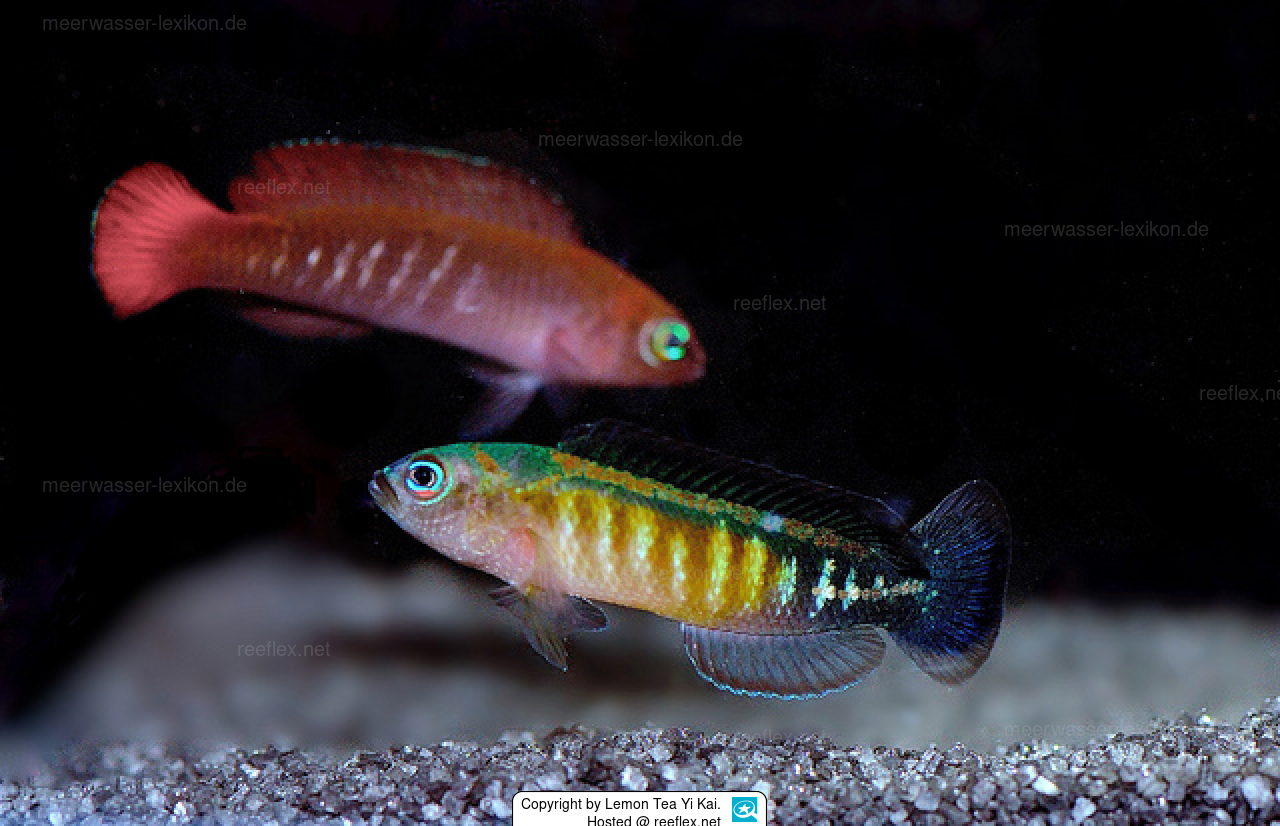am 18.08.12#2
So unterschiedlich kann es sein. Ich habe vor ein paar Tagen ein Weibchen aus einem anderen Becken zu diesem Männchen dazu. Ich dachte er wäre längst gestorben, weil ich ihn nie gesehen hatte.
Das Weibchen wurde regelrecht in den Steinaufbau gelockt, und seit 2 Tagen seh ich beide nicht mehr.
Ich muss allerdings dazu sagen daß das Becken etwa 4500 liter hat, und noch einige anadere drin schwimmen. Werde weiter berichten, Versteckmöglichkeiten haben sie genügend.
am 13.12.10#1
Ich halte seit 3 Monaten ein männliches Tier.
Dieser Barsch ist aber alles andere, nur nicht friedlich. Ein nachgesetztes Weibchen hat er zu Tote gehetzt, ebenso 3 kleine Grundeln. Ebenso hat er meine beiden Putzergranelen beim Häuten gefressen. Er ist auch nicht scheu, sondern schwimmt den ganzen Tag durchs Becken. Nach meinen kurzen Erfahrungen, würde ich ihn nur mit größeren Fischen zusammen setzen, oder als letzten Fisch einsetzen. Bei mir war er der 2.Fisch. Scheinbar meint er, dass ihm das Becken alleine gehört.







 Lemon Tea Yi Kai, Japan
Lemon Tea Yi Kai, Japan

































































